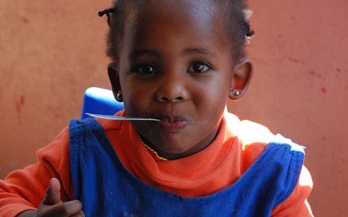GAIN and the Consumer Goods Forum co-convened a meeting on Better Nutrition for a Healthier Workforce. The purpose was to review the evidence and, if warranted, to elevate the issue beyond the rather low-key profile it currently has. What is a workforce nutrition programme? We reviewed evidence from high- and low-income countries and from corporate headquarters to supply chain settings.
Recently GAIN and the Accesss to Nutrition Foundation (ATNF) co-hosted a meeting on "Building Business Commitments for the 2020 Nutrition for Growth Summit" in The Hague. There were 140 participants, with over 60 representatives from the business community. The host was the Government of the Netherlands and the meeting was opened by the Government of Japan, which will host next year’s Global Nutrition Summit.
The retail sector is where consumers come face to face with food. Retailers have significant influence over whether the food that consumers face is nutritious, safe, available, affordable or attractive. I have heard it said many times that the chief buyers for large food retailers are more important in influencing food choices than Ministries of Agriculture or Food.
Any organisation entering into a public private engagement has to be able to publicly justify using public funds. Identifying, preventing, reducing, mitigating and managing conflicts of interest is a key part of that. What are the risks of engaging with private sector?
Next year’s Global Nutrition Summit in Japan marks the start of a demanding Sustainable Development Goals (SDG) race to end malnutrition by 2030. But if we are to have any chance of crossing the finishing line in time, we have to run a different race to the one we have been running for the past 5 years.
The EAT-Lancet Commission is the first robust, extensive review of the evidence combining criteria for healthy dietary changes with environmental analyses of food system’s impacts, to find common ground that results in recommendations for food systems transformation. It is an impressive piece of work; a daunting task to include all the key components and supporting analyses into a single journal article.
First, how do we have to eat differently to significantly reduce malnutrition? Second, what food production systems do we have to put in place to use natural resources sustainably and live within climate change targets? The EAT Lancet Report is a landmark because it answers these two questions simultaneously.
Too often we stop at “you are the future” and of course that is true, but whether a high school student or an early career professional, these young people are the present. They have tools like social media to mobilise and organise and speak out, they have computer literacy to design apps that can promote accountability and transparency, they have an ability to multitask and they have numbers.
Since 2010, the Scaling Up Nutrition (SUN) Movement has inspired a new way of working collaboratively to end malnutrition–in all its forms. And yet, 1000 days into the SDG era, no high-income country has become a member of the SUN Movement. Why does this matter? Joining SUN will help high-income countries achieve greater coherence in their battle against malnutrition.
Food safety issues have almost no visibility. This is very strange on both counts. As the presentations at the Pontifical Academy of Sciences – GAIN technical workshop in the Vatican made clear, food safety threats are on the rise as food systems modernise but the capacity to control those risks lags behind.










